The Structural and Electromagnetic Comparative Analysis of the Bifilar-Meander-Type Winding Method of Superconducting DC Circuit Breaker
Abstract
:1. Introduction
1.1. Background
1.2. Research Scope
2. The Winding Types for the Modules of the Superconducting Fault-Current-Limiter
3. Winding Sequence of Bifilar-Meander Type
4. Maxwell Structural Comparative Analysis of Bifilar-Meander Type
4.1. Winding Method of Superconducting Wire Rod
4.2. Design of the Simulation Model
4.3. Results of the Simulation Model
5. Maxwell Electromagnetic Comparative Analysis of Bifilar-Meander Type
6. Review
7. Conclusions
- 1.
- The winding methods suitable for the modular structure of the SFCL are the spiral type and meander type.
- 2.
- Helical and meander types are optimal for increasing the superconducting wire used in the SFCL.
- 3.
- Based on the simulation results, the magnetic field intensity generated from the superconducting wires of the SFCL was the lowest in the meander type. It occurred evenly from all superconducting wires.
Author Contributions
Funding
Data Availability Statement
Conflicts of Interest
References
- KEITI (Korea Environmental Industry and Technology Institute). Emissions Reduction through the Upgrade of Coal-Fired Power Plants; KONETIC Overseas Investigation Report; KEITI: Seoul, Republic of Korea, 2015; Volume 104. [Google Scholar]
- ABB. ABB Review—60 Years of HVDC; ABB: Zürich, Switzerland, 2014. [Google Scholar]
- Hitachi ABB Power Grids. NordLink HVDC Interconnector-Changing European Power Landscape; Hitachi ABB Power Grids: Zürich, Switzerland, 2021. [Google Scholar]
- Callavik, M.; Lundberg, P.; Hansson, O. NORDLINK pioneering VSC-HVDC interconnect or between Norway and Germany. In ABB White Paper; ABB: Zürich, Switzerland, 2015; pp. 1–6. [Google Scholar]
- Pei, X.; Cwikowski, O.; Vilchis-Rodriguez, D.S.; Barnes, M.; Smith, A.C.; Shuttleworth, R. A review of technologies for MVDC circuit breakers. In Proceedings of the IECON 2016—42nd Annual Conference of the IEEE Industrial Electronics Society, Florence, Italy, 23–26 October 2016; pp. 3799–3805. [Google Scholar] [CrossRef]
- Xiang, B.; Liu, Z.; Geng, Y.; Yanabu, S. DC circuit breaker using superconductor for current limiting. IEEE Trans. Appl. Supercond. 2015, 25, 5600207. [Google Scholar]
- Callavik, M.; Blomberg, A. The hybrid HVDC breaker. In ABB Grid Systems; ABB: Zürich, Switzerland, 2012. [Google Scholar]
- Park, S.-Y.; Choi, H.-S. Operation Characteristics of Mechanical DC Circuit Breaker Combined with LC Divergence Oscillation Circuit for High Reliability of LVDC System. Energies 2021, 14, 5097. [Google Scholar] [CrossRef]
- Park, S.Y.; Kim, G.W.; Jeong, J.S.; Choi, H.S. The modeling of the LC divergence oscillation circuit of a superconducting DC circuit breaker using PSCAD/EMTDC. Energies 2022, 15, 780. [Google Scholar] [CrossRef]
- Park, S.Y. A study on the characteristics of superconducting DC circuit breakers for securing DC power grid supply reliability. Ph.D. Dissertation, Chosun University Graduate School, Gwangju, Republic of Korea, 2022. [Google Scholar]
- Kim, G.; Lee, J.; Park, J.; Choi, H.; Lee, M. A Zero Crossing Hybrid Bidirectional DC Circuit Breaker for HVDC Transmission Systems. Energies 2021, 14, 1349. [Google Scholar] [CrossRef]
- Noe, M.; Juengst, K.-P.; Werfel, F.; Cowey, L.; Wolf, A.; Elschner, S. Investigation of high-Tc bulk material for its use in resistive superconducting fault current limiters. IEEE Trans. Appl. Supercond. 2001, 11, 1960–1963. [Google Scholar] [CrossRef]
- Majoros, M.; Ye, L.; Campbell, A.M.; Coombs, T.A.; Sumption, M.D.; Collings, E.W. Modeling of Transport AC Losses in Superconducting Arrays Carrying Anti-Parallel Currents. IEEE Trans. Appl. Supercond. 2007, 17, 1803–1806. [Google Scholar] [CrossRef]
- Zhang, J.; Dai, S.; Ma, T.; Xu, Y.; Yan, X. High-Frequency Impulse Modeling and Longitudinal Insulation Analysis of Bifilar Superconducting Coil. IEEE Trans. Appl. Supercond. 2020, 31, 1–8. [Google Scholar] [CrossRef]
- Akbar, A.; Dutoit, B. Fast Quench Detection in SFCL Pancake Using Optical Fibre Sensing and Machine Learning. IEEE Trans. Appl. Supercond. 2022, 32, 1–5. [Google Scholar] [CrossRef]
- Kang, H.G.; Lee, C.J.; Nam, K.W.; Yoon, Y.S.; Chang, H.M.; Ko, T.K.; Seok, B.Y. Development of a 13.2 kV/630 A (8.3 MVA) high temperature superconducting fault current limiter. IEEE Trans. Appl. Supercond. 2008, 18, 628–631. [Google Scholar] [CrossRef]
- Jo, H.C.; Chang, K.S.; Kim, Y.J.; Chu, S.Y.; Kim, H.J.; Kim, H.M.; Yoon, Y.S.; Ko, T.K. Operating Characteristics of Oval-Shaped Resistive Superconducting Fault Current Limiter. IEEE Trans. Appl. Supercond. 2011, 21, 1246–1249. [Google Scholar] [CrossRef]
- Ahn, M.C.; Jang, J.Y.; Ko, T.K.; Lee, H. Novel Design of the Structure of a Non-Inductive Superconducting Coil. IEEE Trans. Appl. Supercond. 2010, 21, 1250–1253. [Google Scholar] [CrossRef]
- Shen, B.; Chen, Y.; Li, C.; Wang, S.; Chen, X. Superconducting fault current limiter (SFCL): Experiment and the simulation from finite-element method (FEM) to power/energy system software. Energy 2021, 234, 121251. [Google Scholar] [CrossRef]
- Kb, A.; Thomas, R.J.; Mathai, J.P.; Nijhuis, A. Analytical and Numerical Investigations on the Degradation of REBCO Based Superconducting Tapes Under Bending. IEEE Trans. Appl. Supercond. 2021, 31, 8400712. [Google Scholar] [CrossRef]
- Pekarčíková, M.; Michalcová, E.; Frolek, L.; Šouc, J.; Gogola, P.; Drienovský, M.; Skarba, M.; Mišík, J.; Gömöry, F. Effect of mechanical loading on coated conductor tapes due to winding onto round cables. IEEE Trans. Appl. Supercond. 2018, 28, 8400505. [Google Scholar] [CrossRef]
- Takayasu, M. Width-bending characteristic of REBCO HTS tape and flat-tape Rutherford-type cabling. Supercond. Sci. Technol. 2021, 34, 125020. [Google Scholar] [CrossRef]
- Song, W.; Pei, X.; Zeng, X.; Yazdani-Asrami, M.; Fang, X.; Fang, J.; Jiang, Z. AC Losses in Noninductive SFCL Solenoidal Coils Wound by Parallel Conductors. IEEE Trans. Appl. Supercond. 2020, 30, 5602509. [Google Scholar] [CrossRef]
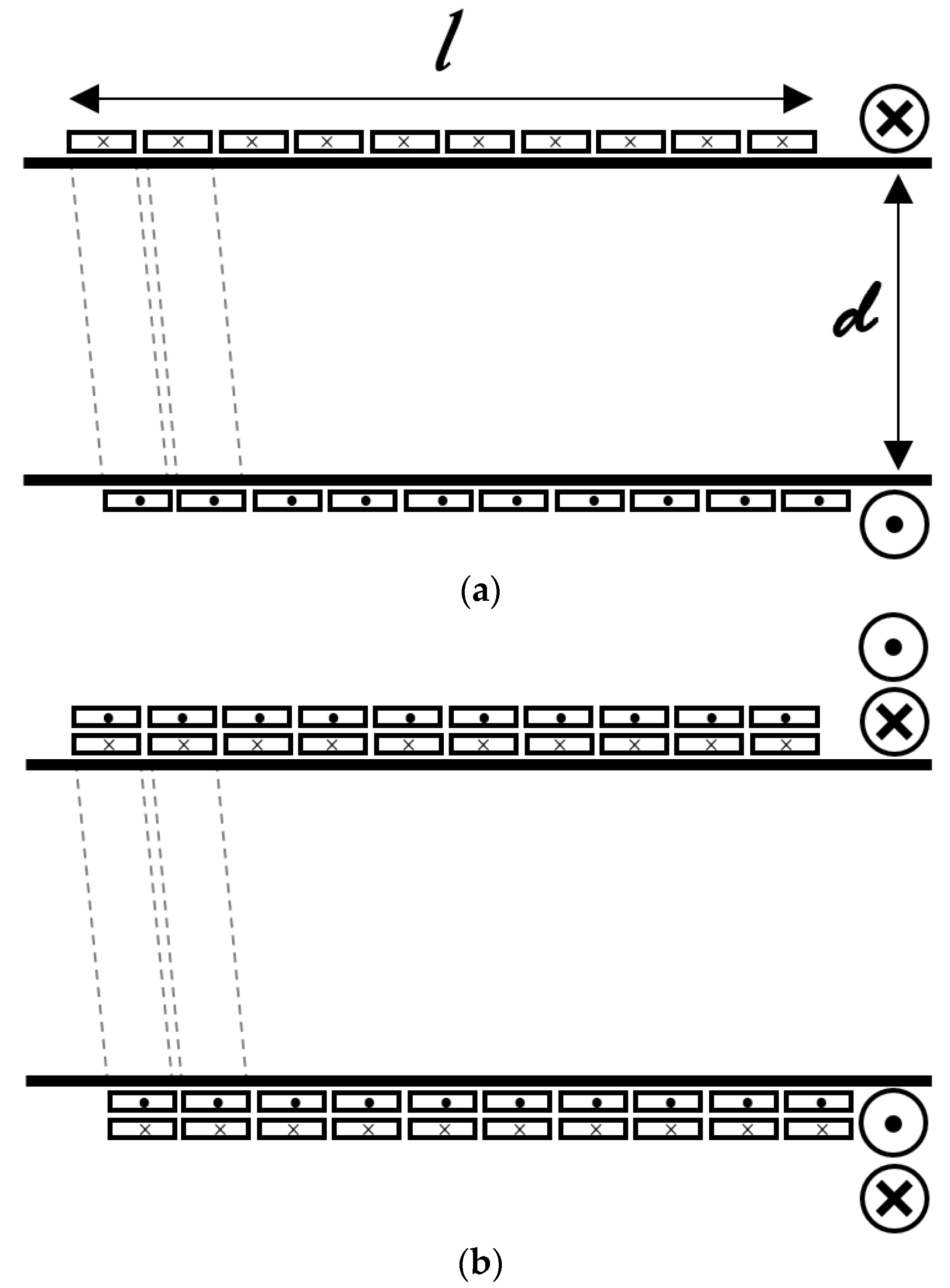
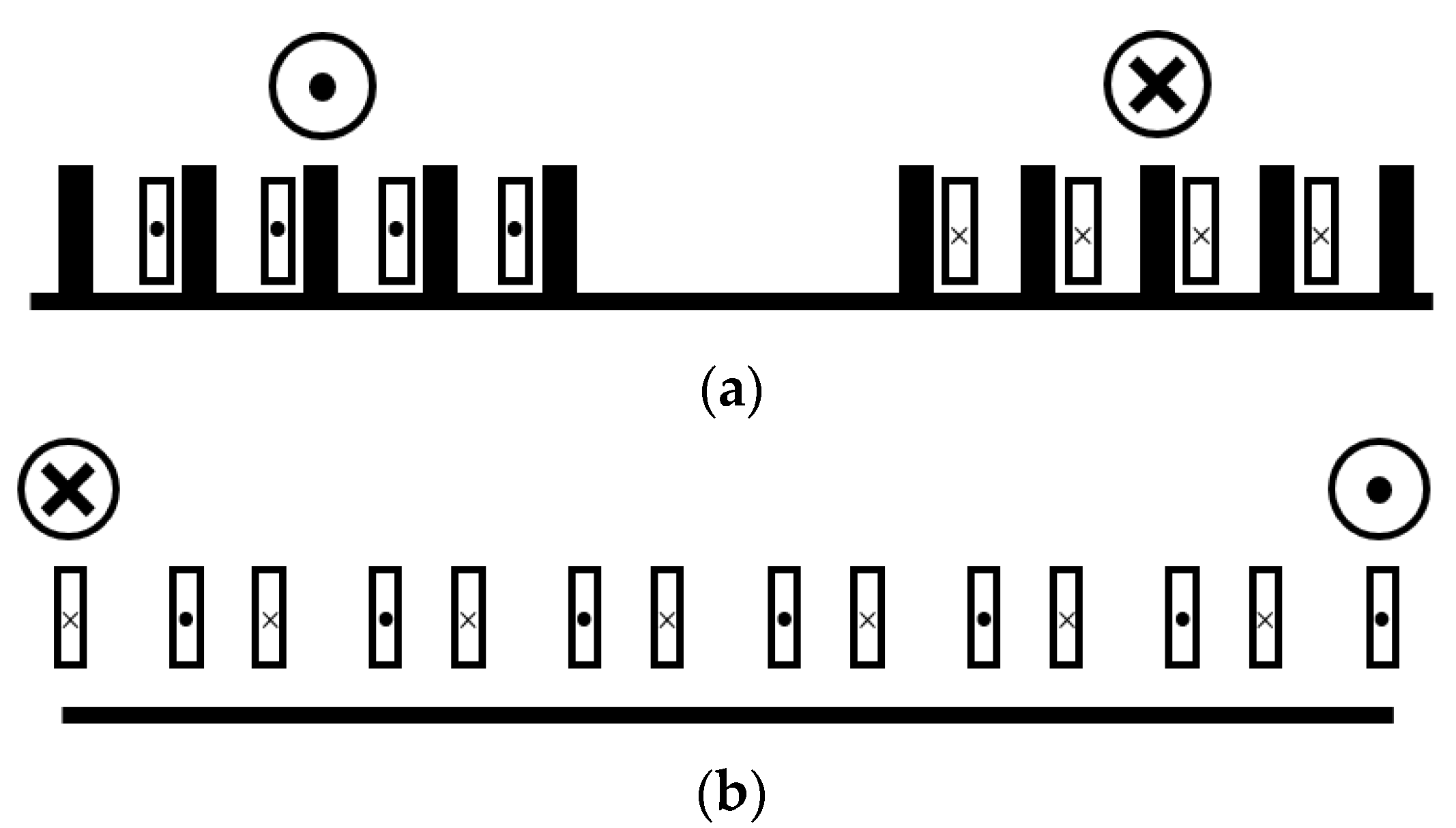




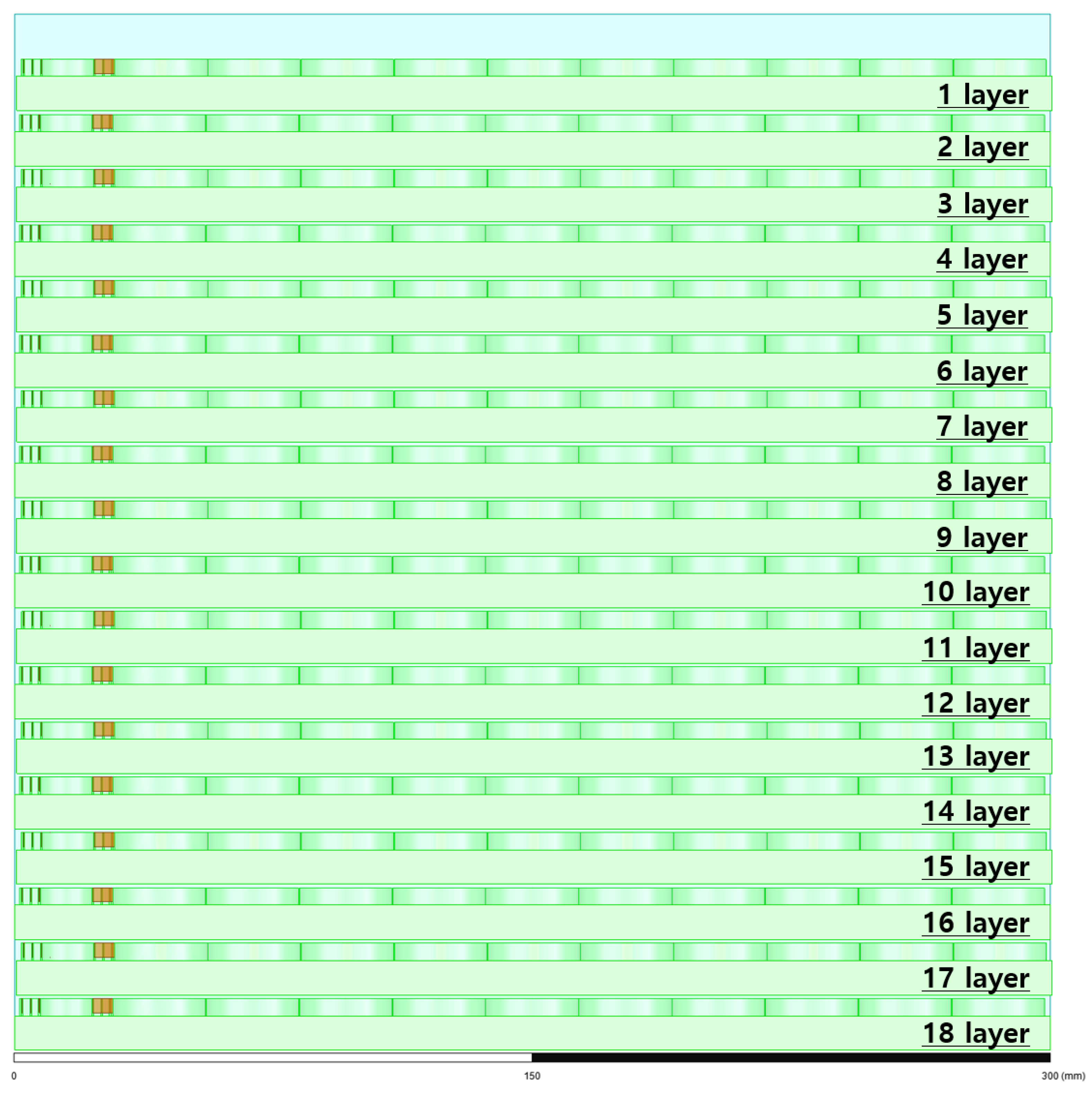



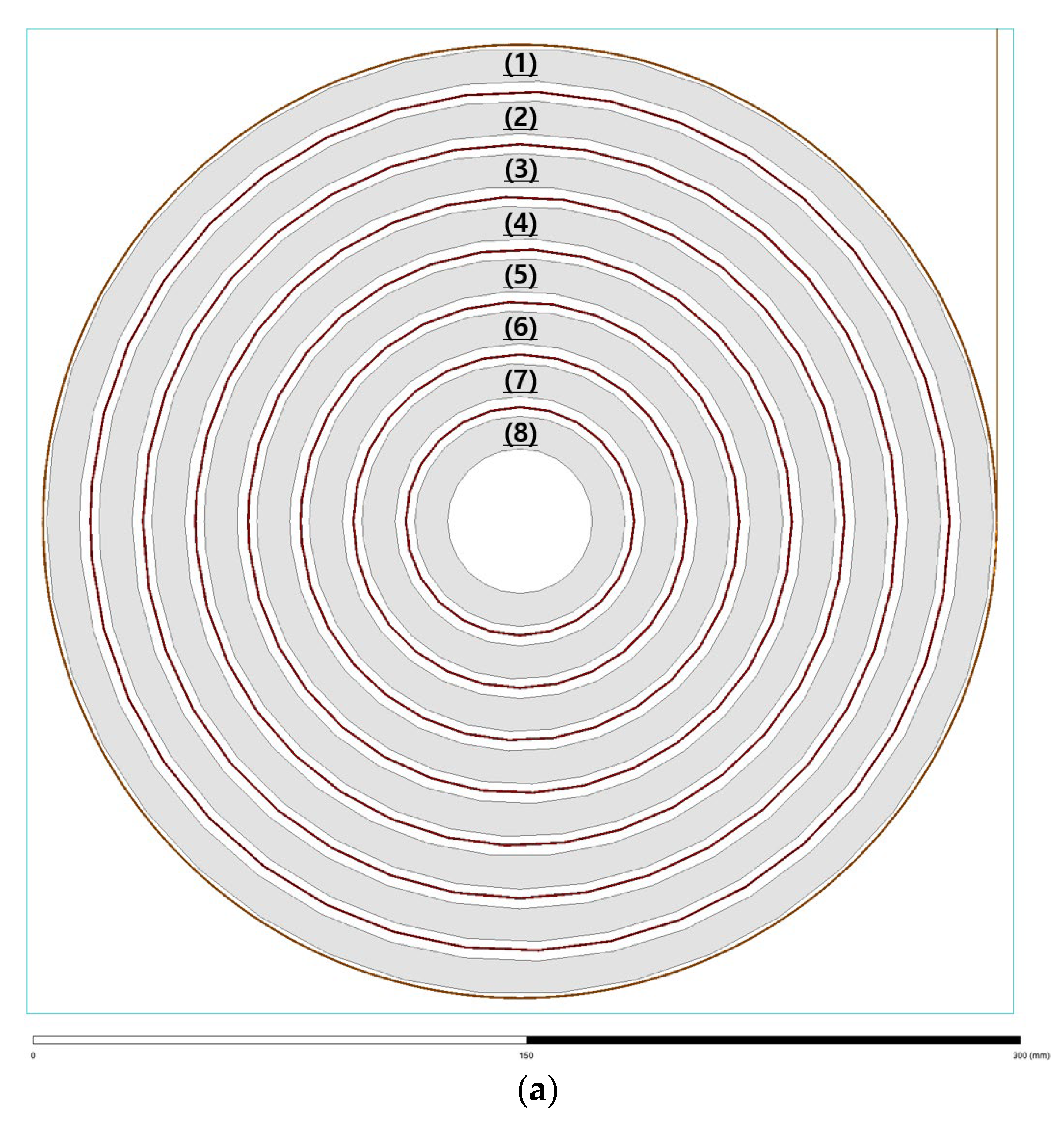
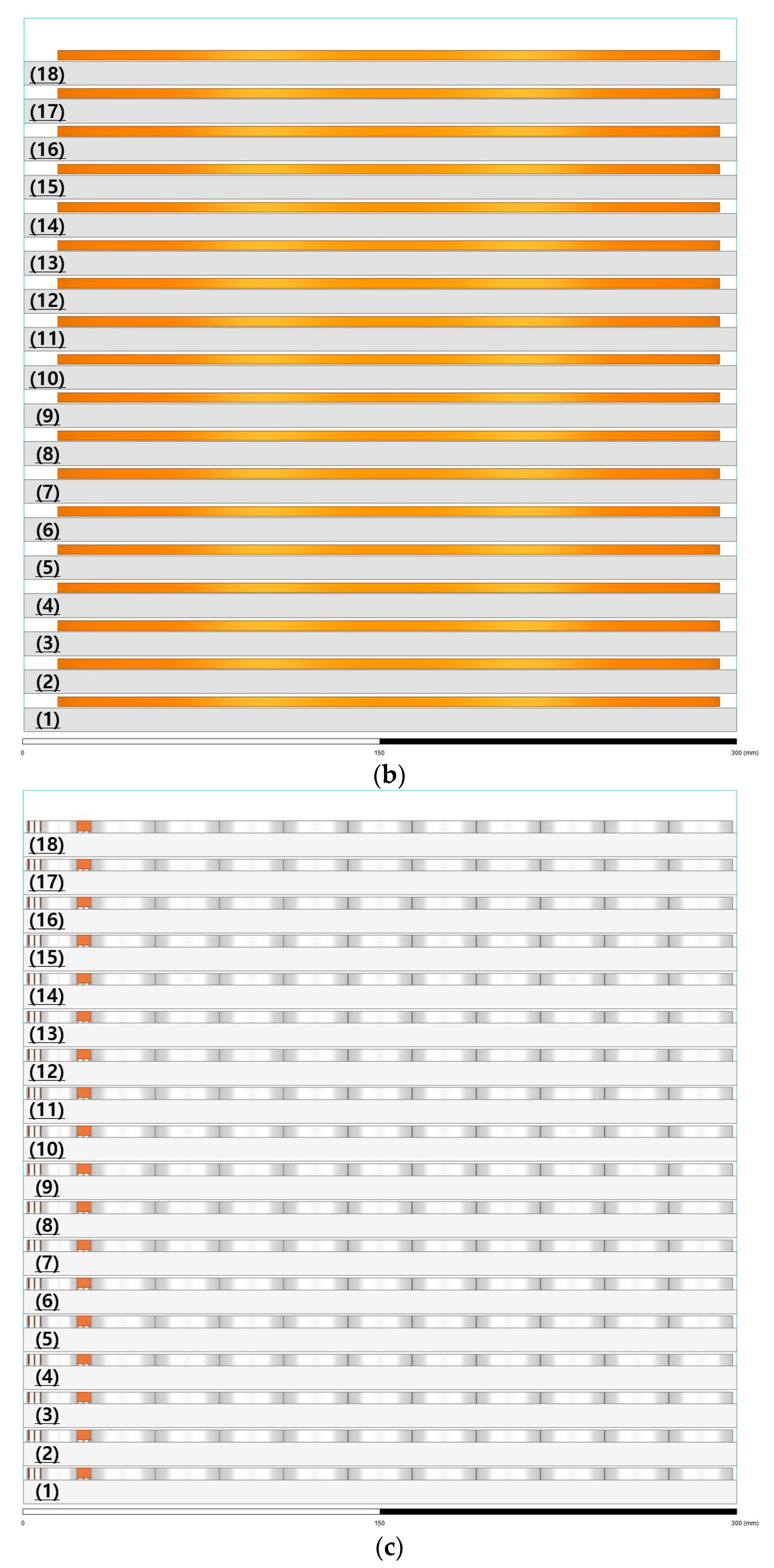

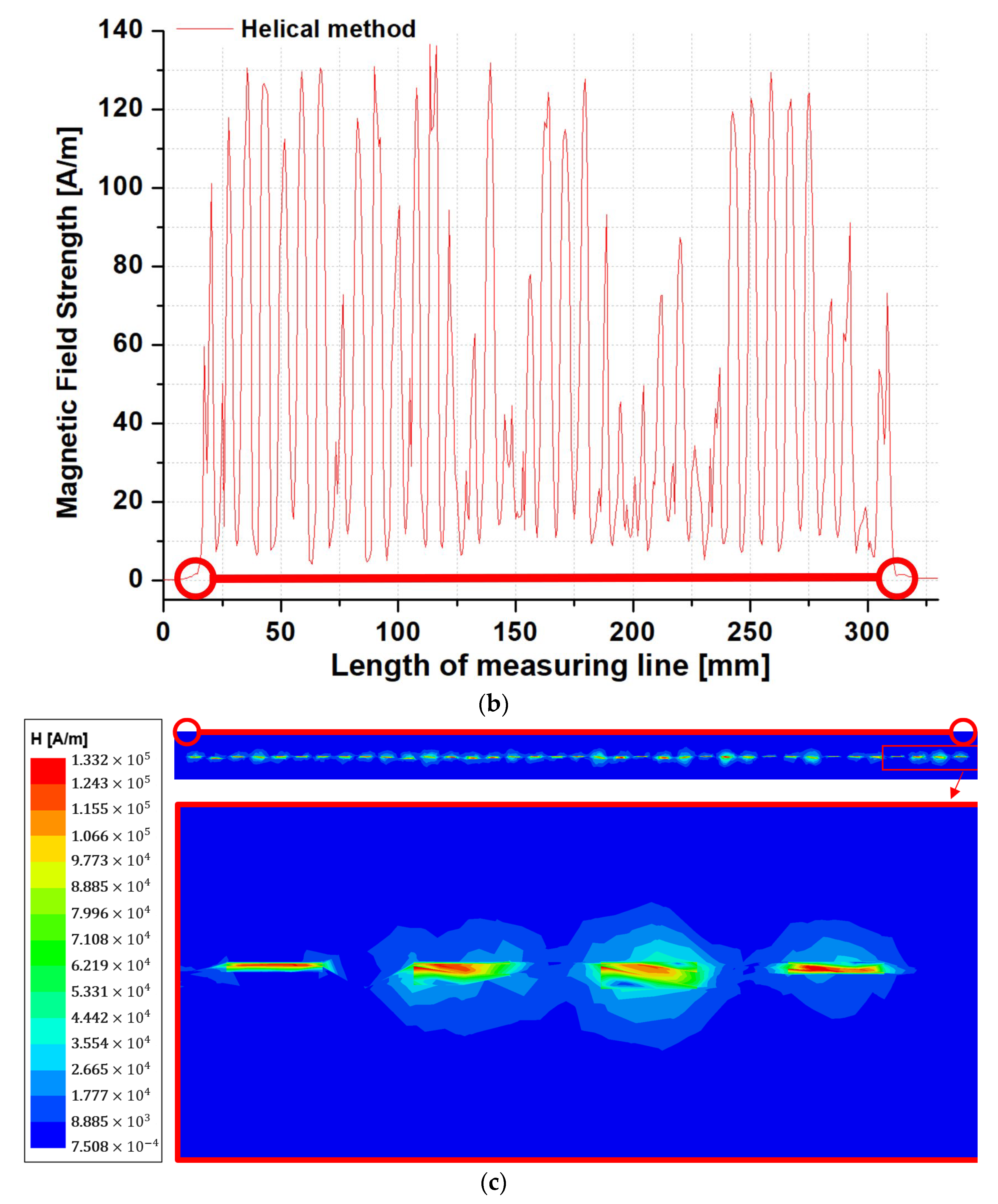




| Winding Type | Bifilar-Helical Type | Bifilar-Spiral Type | Bifilar-Meander Type | |
|---|---|---|---|---|
| Single | Module | 1 layer | 1 layer | 1 layer |
| Available windings | about 25.17 m | about 0.89 m | about 25.17 m | |
| The magnetic field strength of a superconducting wire | (Max.) about 136.1 A/m (Av.) about 80.6 A/m | (Max.) about 125.6 A/m (Av.) about 64.4 A/m | (Max.) about 81.7 A/m (Av.) about 68.3 A/m | |
| Multi | Available modules | 8 layers | 18 layers | 18 layers |
| Available windings | about 153.55 m | about 16.02 m | about 453.06 m | |
Disclaimer/Publisher’s Note: The statements, opinions and data contained in all publications are solely those of the individual author(s) and contributor(s) and not of MDPI and/or the editor(s). MDPI and/or the editor(s) disclaim responsibility for any injury to people or property resulting from any ideas, methods, instructions or products referred to in the content. |
© 2023 by the authors. Licensee MDPI, Basel, Switzerland. This article is an open access article distributed under the terms and conditions of the Creative Commons Attribution (CC BY) license (https://creativecommons.org/licenses/by/4.0/).
Share and Cite
Park, S.-Y.; Kim, G.-W.; Jeong, J.-S.; Choi, H.-S. The Structural and Electromagnetic Comparative Analysis of the Bifilar-Meander-Type Winding Method of Superconducting DC Circuit Breaker. Energies 2023, 16, 1866. https://doi.org/10.3390/en16041866
Park S-Y, Kim G-W, Jeong J-S, Choi H-S. The Structural and Electromagnetic Comparative Analysis of the Bifilar-Meander-Type Winding Method of Superconducting DC Circuit Breaker. Energies. 2023; 16(4):1866. https://doi.org/10.3390/en16041866
Chicago/Turabian StylePark, Sang-Yong, Geon-Woong Kim, Ji-Sol Jeong, and Hyo-Sang Choi. 2023. "The Structural and Electromagnetic Comparative Analysis of the Bifilar-Meander-Type Winding Method of Superconducting DC Circuit Breaker" Energies 16, no. 4: 1866. https://doi.org/10.3390/en16041866
APA StylePark, S.-Y., Kim, G.-W., Jeong, J.-S., & Choi, H.-S. (2023). The Structural and Electromagnetic Comparative Analysis of the Bifilar-Meander-Type Winding Method of Superconducting DC Circuit Breaker. Energies, 16(4), 1866. https://doi.org/10.3390/en16041866







